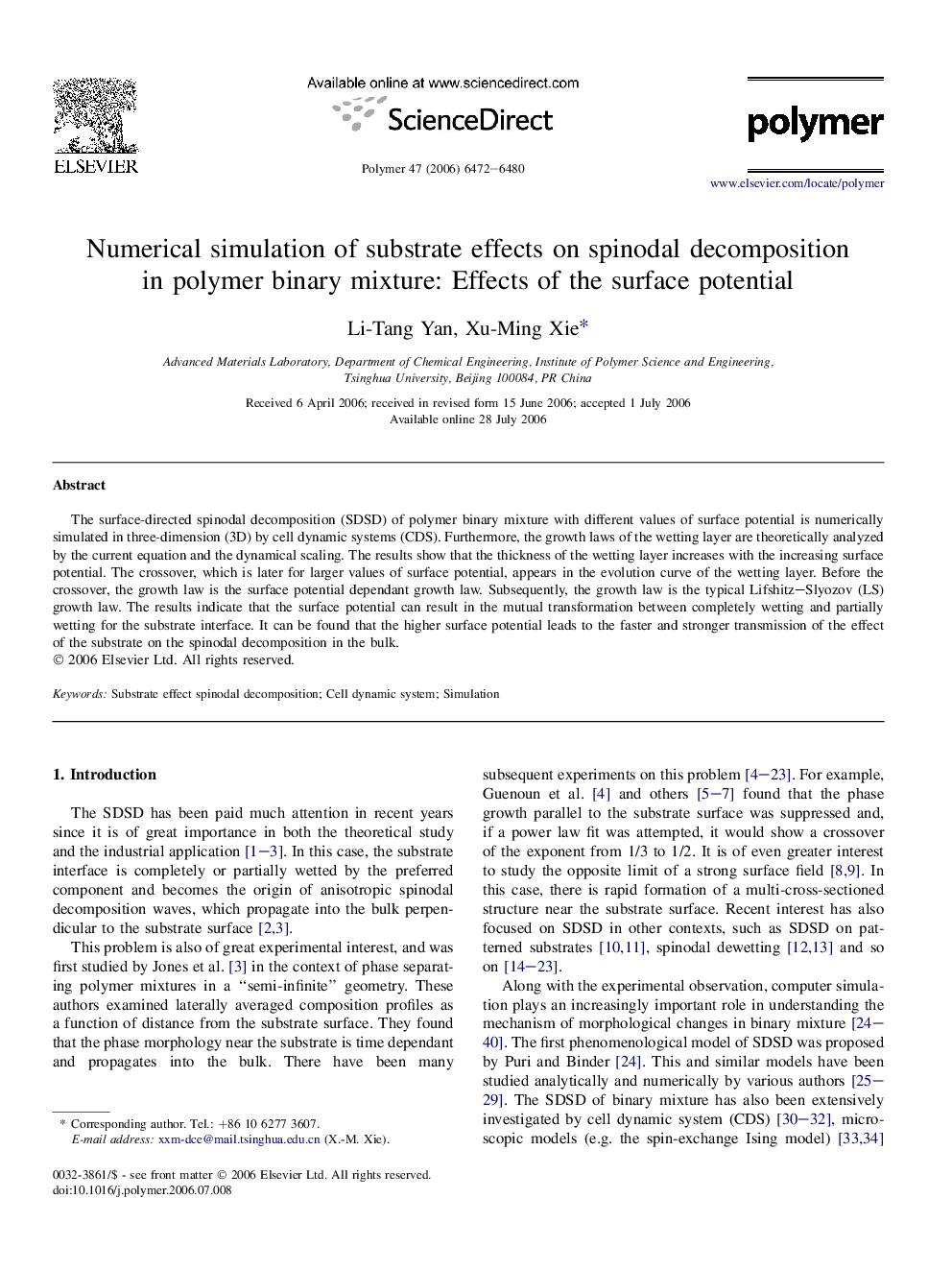| Article ID | Journal | Published Year | Pages | File Type |
|---|---|---|---|---|
| 5186923 | Polymer | 2006 | 9 Pages |
The surface-directed spinodal decomposition (SDSD) of polymer binary mixture with different values of surface potential is numerically simulated in three-dimension (3D) by cell dynamic systems (CDS). Furthermore, the growth laws of the wetting layer are theoretically analyzed by the current equation and the dynamical scaling. The results show that the thickness of the wetting layer increases with the increasing surface potential. The crossover, which is later for larger values of surface potential, appears in the evolution curve of the wetting layer. Before the crossover, the growth law is the surface potential dependant growth law. Subsequently, the growth law is the typical Lifshitz-Slyozov (LS) growth law. The results indicate that the surface potential can result in the mutual transformation between completely wetting and partially wetting for the substrate interface. It can be found that the higher surface potential leads to the faster and stronger transmission of the effect of the substrate on the spinodal decomposition in the bulk.
